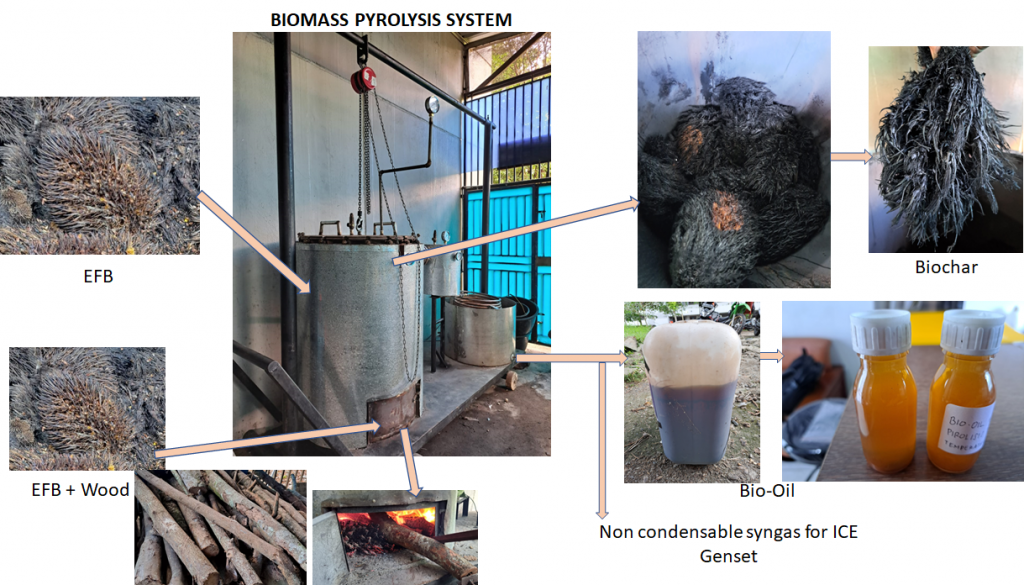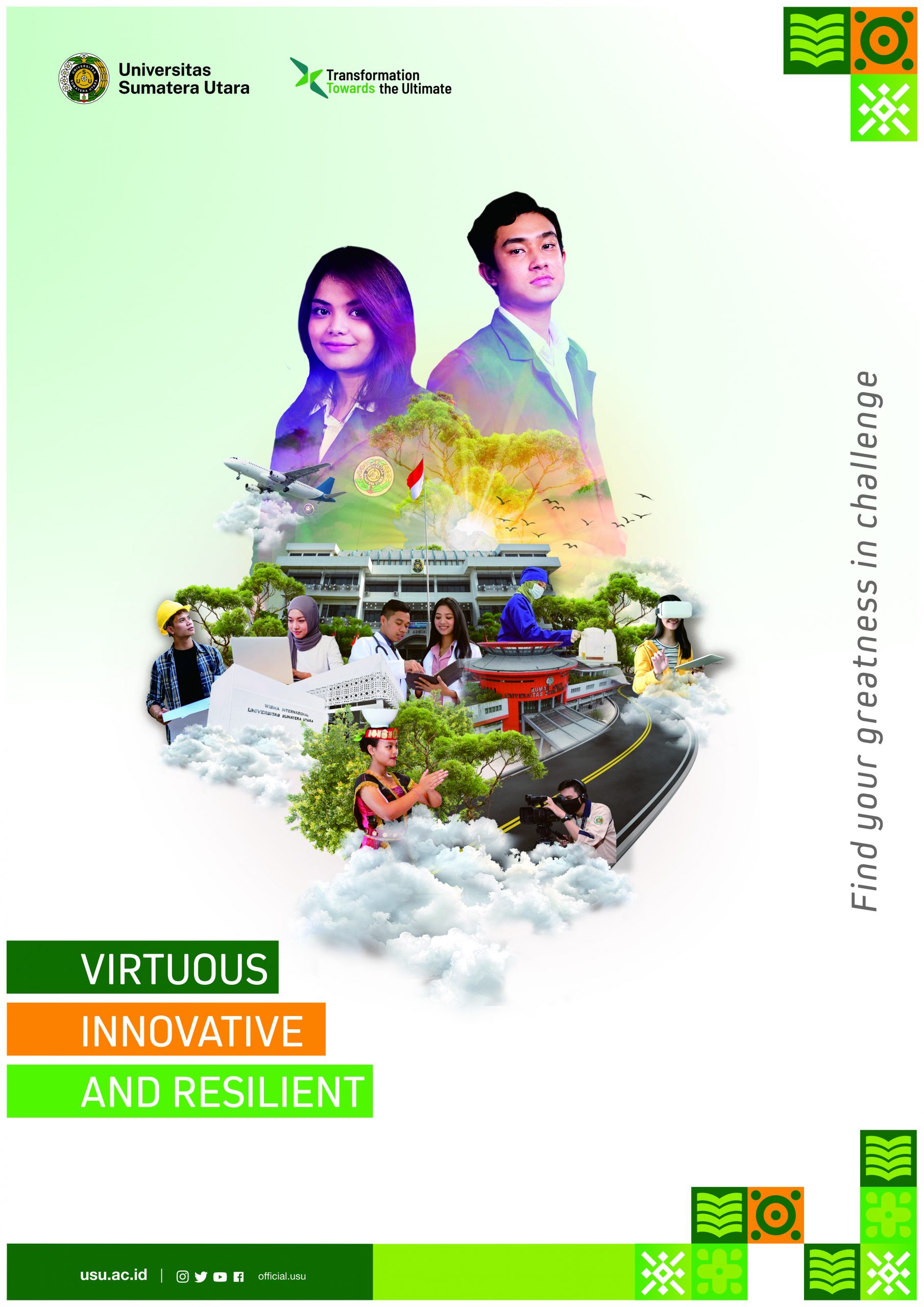Indonesia holds one of the largest palm oil commodities in the world, occupying 12.76 million hectares with a sizable area of oil palm estate in the North Sumatra Province and producing 36.59 million tonnes of Fresh Fruit Bunch (FFB) in 2018. Effective waste management is crucial for the life cycle of the industry in addition to its environment. Processing 100 tonnes of FFB produces waste in the form of 5 tonnes of Oil Palm Shell (OPS), 22 tonnes of Empty Fruit Bunch (EFB), 14 tonnes of Oil Palm Fiber (OPF), and Palm Oil Mill Effluent (POME). POME is a highly pollutive liquid waste and accounts for an estimated 60% of the processed FFB produced substantially nationally. The combined amount of pollutants calls for better waste management that can contribute to a circular economy, especially in oil palm estates.
A team of researchers at the Faculty of Engineering,
Universitas Sumatera Utara, led by Dr. Eng Taufiq Bin Nur, S.T., M.Eng.Sc., have come up with an optimal waste processing technology by using pyrolysis, which can also increase the commercial value of the waste by utilizing its EFB and sludge. Applying this technology supports the realization of food security by producing organic fertilizers and, therefore, new renewable energy derived from biomass.
Pyrolysis is a thermochemical decomposition of biomass into a range of valuable products either in the total absence of oxygen or with limited oxygen. The heat needed by the process is obtained through burning biomass in the form of unused wood and EFB. The process can produce biochar, liquid smoke (bio-oil), and syngas from biomass raw materials in one production by maintaining the working temperature of the reactor constant as needed up to 550°C. The pyrolysis process increases the calorific value of the waste compared to its raw state, rising to 36.5% in the case of EFB and coffee dregs or 65% in coconut shells. When applied to EFB raw materials, at the moment, the test results at the Indonesian Oil Palm Research Institute in Medan show that the biochar also had the following composition: Nitrogen (0.82%), P2O5 (0.83%, total), K2O (11.57%), Organic C (35.24%), and 0.80% Organic N.
The research team sees multiple advantages in implementing this innovative smokeless pyrolysis system in oil palm estates. Firstly, it helps minimize the environmental impact of the waste because it is smokeless, and up to 250 kg of EFB can be processed further per 5 hours, producing biochar, bio-oil, and syngas, as shown in Figures 1 - 2. Biochar and bio-oil could be an alternative to organic fertilizer. Furthermore, flue gas from the combustion can be treated further to minimize CO2 emissions in the plantation area. The heat from the system can also dry the POME sludge, allowing easier processing.

Figure 1. Biomass Pyrolysis System.
This pyrolysis technology innovation from USU Faculty of Engineering researchers can help overcome the Palm Oil Mill (POM) waste problem while increasing the sale value. Their goal is to operate a start-up industry producing organic fertilizer while dealing with POM waste in North Sumatra, building a sustainable industry enriched with better waste management and promoting a circular economy by cooperating with the rural enterprise.

